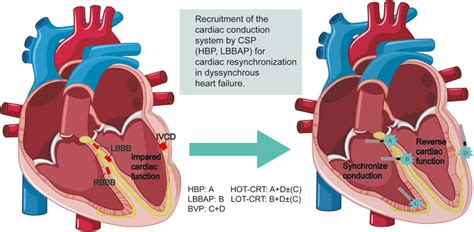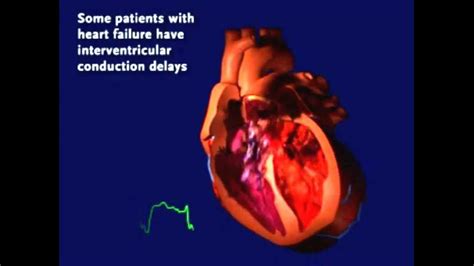lv dyssynchrony | right ventricular delay symptoms lv dyssynchrony LV dyssynchrony, defined as nonuniform timing of peak myocardial shortening, may have .
© ISEC Komerciāli lapas materiālus drīkst izmantot tikai ar ISEC atļauju. Izstrādāts Datorikas institūtā DIVI.Datorikas institūtā DIVI.
0 · what is dyssynchronous heart failure
1 · ventricular dyssynchrony life expectancy
2 · right ventricular delay symptoms
3 · right ventricular conduction delay symptoms
4 · lower heart chamber problems
5 · heart wall not moving properly
6 · heart muscle not contracting properly
7 · heart chambers not beating together
Izolēts dūmvads Termo L 1000 304-0.8/430 D150/210 Pieejami nerūsējošā tērauda dūmvadi diametrā D150/210mm, garumā 500-1
Ventricular dyssynchrony is a condition where the heart chambers beat out of .Three chief presentations of dyssynchrony can occur: Atrioventricular (AV) dyssynchrony occurs when there is an unfavorable difference in timing between atrial and ventricular contractions. Interventricular dyssynchrony occurs when there is a difference in timing between right ventricular (RV) and left ventricular (LV) Systole.
The presence of LV mechanical dyssynchrony, despite its heterogenous definitions and . In patients with a left bundle branch block (LBBB), the late-activated lateral wall .AV dyssynchrony is a delay in the normal sequential AV contraction, due to delayed conduction .
LV dyssynchrony, defined as nonuniform timing of peak myocardial shortening, may have . Left ventricular (LV) dyssynchrony is a frequently observed feature in patients . This article explains the pathophysiology, diagnosis, and treatment of . Mechanical dyssynchrony refers to the abnormal prolongation of the timing of .
Ventricular dyssynchrony is a disorganized contraction of your heart’s lower chambers that affects your heart function and efficiency. Learn about the types, causes, diagnosis, treatment and prevention of this condition from Cleveland Clinic. Ventricular dyssynchrony is a condition where the heart chambers beat out of sync, affecting blood flow and leading to heart failure. Learn about the types, diagnosis, and treatments of ventricular dyssynchrony, and how it differs from congestive heart failure.
Ventricular dyssynchrony is a lack of synchrony of contractions in different ventricles in the heart, which can reduce cardiac efficiency and is correlated with heart failure. Learn about the types, diagnosis and treatment of ventricular dyssynchrony, and how it .The presence of LV mechanical dyssynchrony, despite its heterogenous definitions and measured parameters, seems to confer an adverse prognosis on patients in a variety of clinical situations. Thus, it can be associated with heart failure outcome even when it . In patients with a left bundle branch block (LBBB), the late-activated lateral wall contraction results in stretching and, therefore, lengthening of the septum during systole. Logic would suggest that CRT delivered by biventricular pacing would remedy this .
AV dyssynchrony is a delay in the normal sequential AV contraction, due to delayed conduction through the AV node. The result is a disordered ventricular diastolic filling and a decreased LV preload that compromises stroke volume (due to the failure of the Starling mechanism) [1, 2].LV dyssynchrony, defined as nonuniform timing of peak myocardial shortening, may have several underlying mechanisms, including defects in His-Purkinje conduction, disturbances in electromechanical coupling, and purely mechanical causes.

Left ventricular (LV) dyssynchrony is a frequently observed feature in patients with heart failure, and is recognized as an important predictor of poor outcome if left untreated. The presence. This article explains the pathophysiology, diagnosis, and treatment of dyssynchronous heart failure (HF d), a condition in which the left ventricle contracts in an uncoordinated fashion. It discusses the role of cardiac resynchronization therapy (CRT) in correcting dyssynchrony and improving outcomes in HF d patients. Mechanical dyssynchrony refers to the abnormal prolongation of the timing of contraction or relaxation between the atrium and ventricle (atrioventricular dyssynchrony), between the right ventricle and left ventricle (interventricular dyssynchrony), or between different left ventricular (LV) segments (intraventricular or LV dyssynchrony).1 LV .
what is dyssynchronous heart failure
Ventricular dyssynchrony is a disorganized contraction of your heart’s lower chambers that affects your heart function and efficiency. Learn about the types, causes, diagnosis, treatment and prevention of this condition from Cleveland Clinic. Ventricular dyssynchrony is a condition where the heart chambers beat out of sync, affecting blood flow and leading to heart failure. Learn about the types, diagnosis, and treatments of ventricular dyssynchrony, and how it differs from congestive heart failure.
miu miu shoes consignment
Ventricular dyssynchrony is a lack of synchrony of contractions in different ventricles in the heart, which can reduce cardiac efficiency and is correlated with heart failure. Learn about the types, diagnosis and treatment of ventricular dyssynchrony, and how it .The presence of LV mechanical dyssynchrony, despite its heterogenous definitions and measured parameters, seems to confer an adverse prognosis on patients in a variety of clinical situations. Thus, it can be associated with heart failure outcome even when it .
In patients with a left bundle branch block (LBBB), the late-activated lateral wall contraction results in stretching and, therefore, lengthening of the septum during systole. Logic would suggest that CRT delivered by biventricular pacing would remedy this .AV dyssynchrony is a delay in the normal sequential AV contraction, due to delayed conduction through the AV node. The result is a disordered ventricular diastolic filling and a decreased LV preload that compromises stroke volume (due to the failure of the Starling mechanism) [1, 2].LV dyssynchrony, defined as nonuniform timing of peak myocardial shortening, may have several underlying mechanisms, including defects in His-Purkinje conduction, disturbances in electromechanical coupling, and purely mechanical causes. Left ventricular (LV) dyssynchrony is a frequently observed feature in patients with heart failure, and is recognized as an important predictor of poor outcome if left untreated. The presence.
This article explains the pathophysiology, diagnosis, and treatment of dyssynchronous heart failure (HF d), a condition in which the left ventricle contracts in an uncoordinated fashion. It discusses the role of cardiac resynchronization therapy (CRT) in correcting dyssynchrony and improving outcomes in HF d patients.
ventricular dyssynchrony life expectancy

right ventricular delay symptoms
M43 Engine. The BMW M43 is a straight-4 piston engine. Displacement ranges from 1600 cc to 2000 cc. The engine was built solely on Assembly Line 2 at Steyr, and was the successor to the M40. It features ICIM (Individual Control Intake Manifold) and 2 .
lv dyssynchrony|right ventricular delay symptoms




























